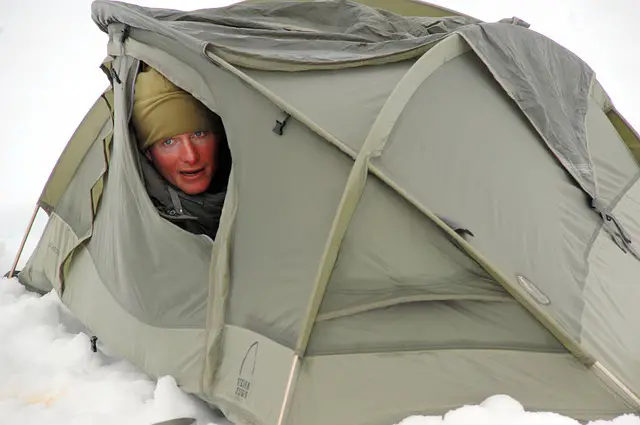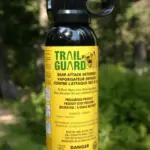There have been drastic changes in the weather over the past few years. Whereas in the past summers were hot but not that hot, today’s hottest temperatures can be quite dangerous for people. Whenever you read the news, there is bound to be a warning about staying protected from the sun and staying hydrated if you go out.
But the hot weather is not the only threat people must consider. The same can go for cold temperatures that can send people into hypothermic shock. There is no going outside during winter without wearing proper clothing.
That makes me wonder – what is the lowest temperature at which a human can survive or breathe? There is so much talk about the crazy hot temperatures but not enough about the cold weather. That is why I wanted to dedicate today’s guide to looking into this issue more closely. If this piques your interest, too, stay tuned!
More...

Table of Contents
What Is the Lowest Temperature in Fahrenheit a Human Can Survive?
There is no right or wrong answer to the question of what is the highest and lowest temperature a human can survive. This will depend on the person's ability to adapt to their surroundings. But it is safe to assume that anything below 95 degrees Fahrenheit will be unacceptable for people.
Let’s put it this way – the core body temperature of a person is going to be between 98 and 99 degrees Fahrenheit. Anything above or below that can cause problems to the human body. Some can even be detrimental to the person’s health and life. So, keeping the core body temperature within its limit is vital.
When you expose the human body to low temperatures, several different things could happen. Here is what you should look out for:
Hypothermia
One of the things that exposure to temperatures of 95 degrees Fahrenheit can do is make the human body hypothermic, which is quite dangerous.
When the person is hypothermic, their body starts using its energy to heat itself. The first thing it will do is begin to shake. If you do not move into a warmer place fast, the body will tire itself, making you feel drowsy or confused. This is where things start to take a turn for the worse.
The worse thing that can happen is organ failure. Due to the body’s inability to function as it should, the organs will start shutting down. If someone experiences multiple organ failures, they will need immediate medical attention if they want a chance to reverse the damage.
Frostbite
Frostbite is another dangerous thing that exposure to low temperatures can cause. When you leave exposed flesh in freezing temperatures for extended periods, the skin will start to damage. Not only will skin killing occur but also the low temperatures will begin killing the underlying tissues in the exposed flesh.
That will lead to irreversible damage – the part of the body that gets frostbite will get discolored, then black. Then it will need to be amputated. This often happens to mountaineers who hike the highest mountains. If they do not have protection for their hands, feet, or nose, these parts are likely to suffer frostbite.
The bad thing is that frostbite can also happen to regular people walking around. If you live or are visiting a place with freezing temperatures, do your best to protect yourself. If you sense that your nose loses sensation, or the same happens to any other body part, move into a warmer place as soon as possible.
What Is the Lowest Temperature in Celsius a Human Can Survive?
A person’s core body temperature is between 98 and 99 degrees Fahrenheit. If you turn this into degrees Celsius, you will find that the core temperature is between 36.5 and 37.5 degrees Celsius.
If this human body temperature drops to 35 degrees Celsius, you will experience hypothermia. I have mentioned some of the symptoms of hypothermia in the previous section. But you also need to know what will happen to your body if you keep it at a temperature even lower than 35 degrees Celsius.
At 27 degrees Celsius, you will lose consciousness. You might experience higher blood pressure in your brain due to the body’s inability to function in cold weather. Death will be inevitable if the core temperature drops to 21 or 20 degrees Celsius.
It sounds chilling, but it is true. A well-clothed person would have nothing to worry about, even if the temperatures reach freezing. But many things can turn wrong for a person not adequately clothed for cold weather. So, whenever you visit a cold place, please do your best to be prepared for everything and anything!
What Is the Coldest Temperature at which a Human Can Breathe?
You should not go out in temperatures less than 10 degrees Fahrenheit or +12 degrees Celsius without using some kind of protection on your face. A scarf is a convenient way to protect your lungs from the cold air entering them as you breathe. If you do not use any kind of covering over your mouth or nose, you risk getting frostbite on your lungs.
Also, a word of advice is to be extra careful if you have some underlying lung disease. The cold air can be detrimental to your lungs and your heart. So, you need to be extra cautious when going out in the cold.
Wrap-Up
Thank you for reading this guide. I hope you learned a lot about the best ways to protect yourself from the extreme cold. Make sure you remember the temperatures mentioned in this guide, and you avoid going out in them. It is best to stay safe than to deal with the consequences of a stupid mistake.
Do you have a story about battling cold temperatures or even hot ones? What was your experience like? I would love to know all about it, so do not hesitate to share everything with the other readers and me.
- Are Merrell Shoes Good? – An Unbiased Review of Merrell Footwear - December 9, 2023
- Where Are Merrell Shoes Made? - December 9, 2023
- Camping in 40-degree Weather: Tips and Tricks - September 25, 2023



![Are Patagonia Jackets Warm? [Temperature Ratings Included] Are Patagonia Jackets Warm? [Temperature Ratings Included]](https://grandcircletrails.com/wp-content/uploads/2022/04/Are-Patagonia-Jackets-Warm-1-150x150.jpg)

![How Much Weight Can a Hammock Hold? [Find Answer In This Post] How Much Weight Can a Hammock Hold? [Find Answer In This Post]](https://grandcircletrails.com/wp-content/uploads/2022/01/How-Much-Weight-Can-a-Hammock-Hold-1-150x150.jpg)
![Can You Hike in Tevas? [Are Tevas Really Good For Hiking?] Can You Hike in Tevas? [Are Tevas Really Good For Hiking?]](https://grandcircletrails.com/wp-content/uploads/2022/05/Can-You-Hike-in-Tevas-1-150x150.jpeg)